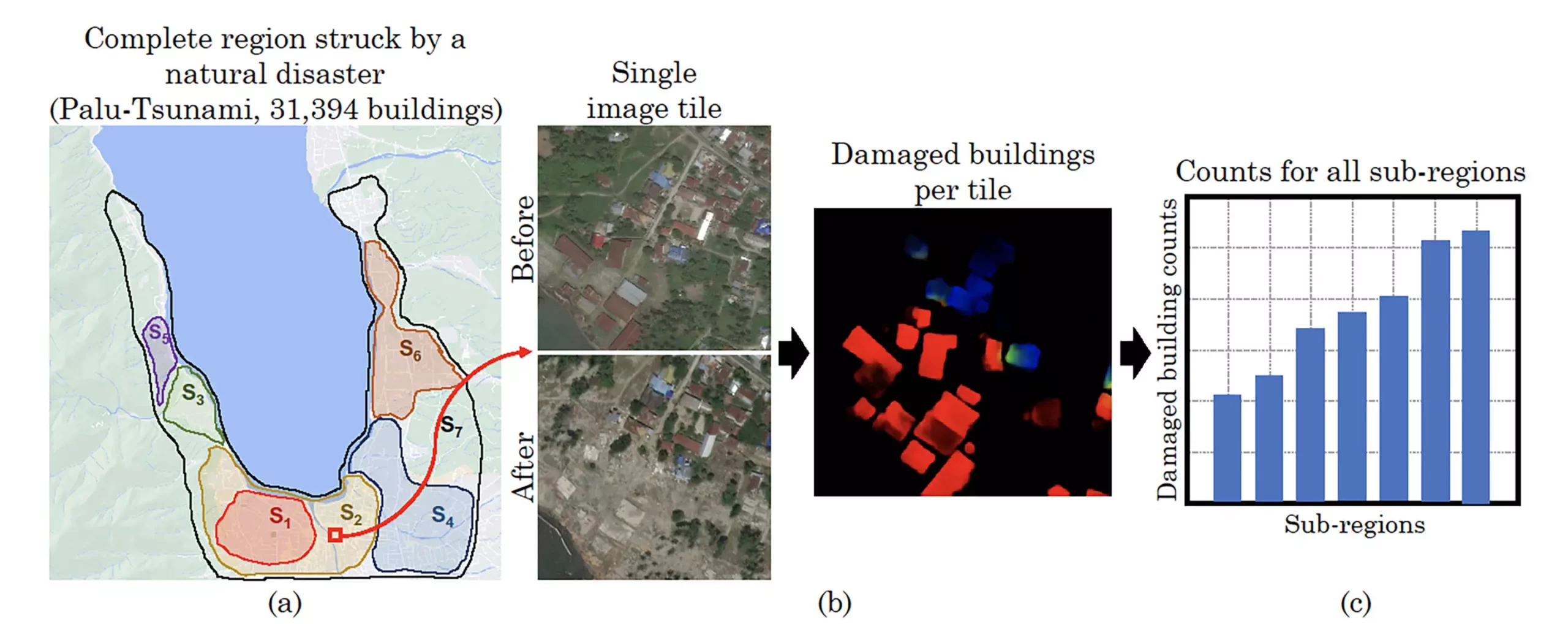In a groundbreaking development that has the potential to revolutionize the field of data analysis, a team of computer scientists at the University of Massachusetts Amherst has unveiled an AI framework known as DISCount. This innovative framework has the capability to tackle two distinct challenges – rapidly detecting damaged buildings in crisis areas and accurately estimating the size of bird flocks. The team’s research, which was recently published in Proceedings of the AAAI Conference on Artificial Intelligence, has garnered significant recognition for its potential social impact.
Redefining Data Analysis
The development of DISCount represents a paradigm shift in the realm of data analysis. By combining the speed and computational power of artificial intelligence with the reliability of human analysis, DISCount is able to provide swift and accurate estimates based on vast collections of images. The team behind this pioneering framework, led by Subhransu Maji, aimed to address the challenges faced in identifying damaged buildings during crises and determining the size of bird flocks using traditional computer vision models. Their approach was to rethink conventional methods of counting and to integrate human expertise with AI capabilities.
The core motivation behind the creation of DISCount was the limitations encountered by the team in their previous projects. Conventional computer vision models proved to be inadequate in delivering precise and reliable results for complex counting tasks. Gustavo Pérez, the lead author of the research, emphasized the need for automated tools that could be utilized by non-experts in AI while maintaining a high level of accuracy. To overcome these challenges, the team decided to adopt a novel strategy that combined the strengths of human intelligence with the efficiency of AI algorithms.
The DISCount Framework
DISCount operates as an adaptable framework that is compatible with existing AI computer vision models. It functions by leveraging AI to analyze extensive datasets, such as images captured over a specific period in a particular region. The AI system identifies a subset of data that requires human validation, allowing researchers to focus on critical elements within the dataset. For example, in the case of identifying damaged buildings, the AI may select key images that illustrate the extent of destruction, enabling human researchers to conduct precise counts. The framework then extrapolates these findings to estimate the overall impact across the region. Additionally, DISCount provides researchers with a confidence interval, enabling informed decision-making regarding the accuracy of the estimates.
The implications of DISCount extend beyond the realm of identifying damaged buildings and estimating bird flock sizes. The framework’s adaptability to various AI models and its emphasis on collaboration between human analysts and AI systems suggest a broader application in diverse fields. By streamlining the data analysis process and enhancing the accuracy of estimates, DISCount opens up new possibilities for researchers and practitioners across different domains. As the team reflects on their journey, one thing remains clear – their idea, while seemingly simple, has the potential to transform the landscape of data analysis.


Leave a Reply